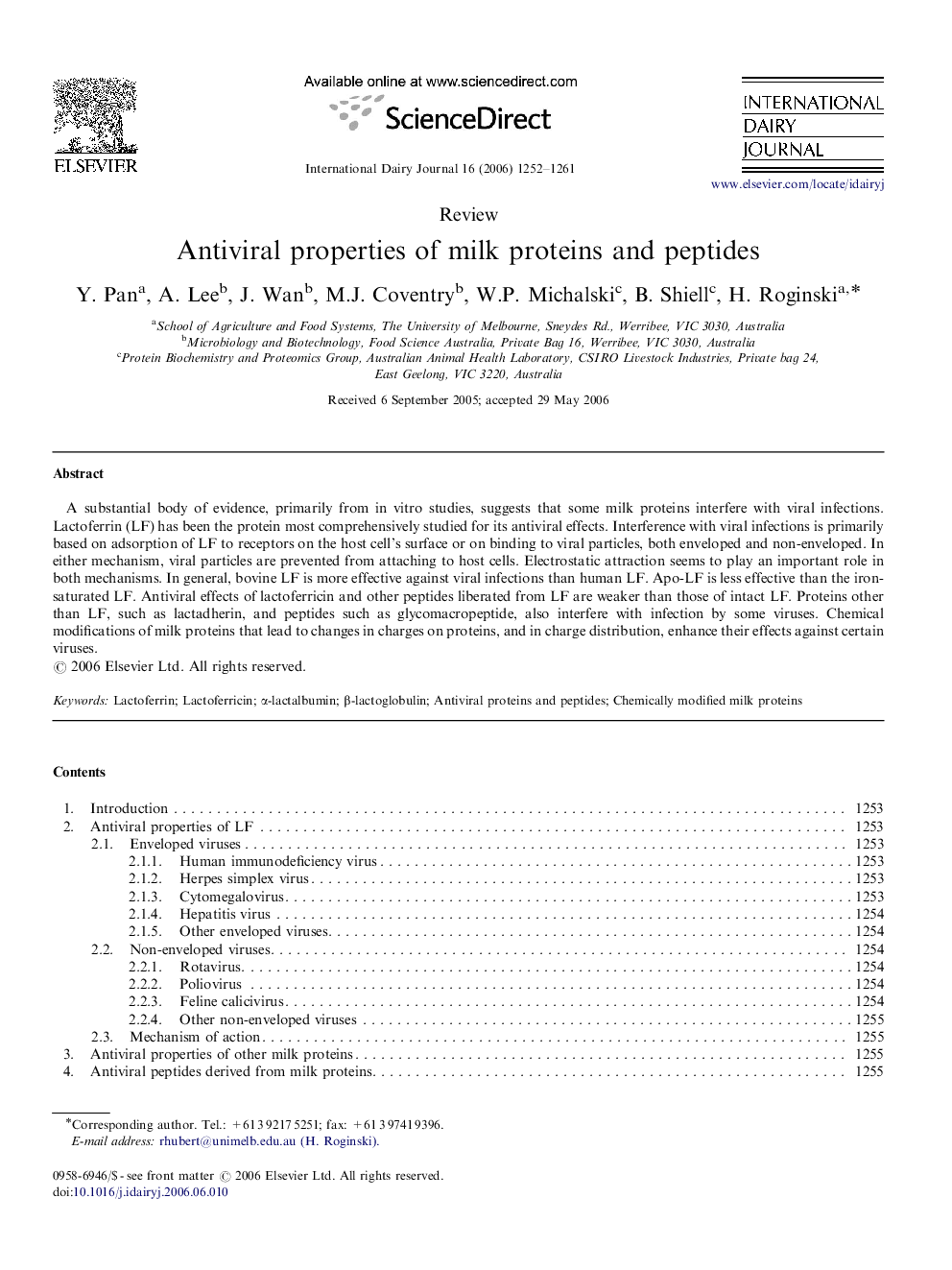| Article ID | Journal | Published Year | Pages | File Type |
|---|---|---|---|---|
| 2435778 | International Dairy Journal | 2006 | 10 Pages |
A substantial body of evidence, primarily from in vitro studies, suggests that some milk proteins interfere with viral infections. Lactoferrin (LF) has been the protein most comprehensively studied for its antiviral effects. Interference with viral infections is primarily based on adsorption of LF to receptors on the host cell's surface or on binding to viral particles, both enveloped and non-enveloped. In either mechanism, viral particles are prevented from attaching to host cells. Electrostatic attraction seems to play an important role in both mechanisms. In general, bovine LF is more effective against viral infections than human LF. Apo-LF is less effective than the iron-saturated LF. Antiviral effects of lactoferricin and other peptides liberated from LF are weaker than those of intact LF. Proteins other than LF, such as lactadherin, and peptides such as glycomacropeptide, also interfere with infection by some viruses. Chemical modifications of milk proteins that lead to changes in charges on proteins, and in charge distribution, enhance their effects against certain viruses.
